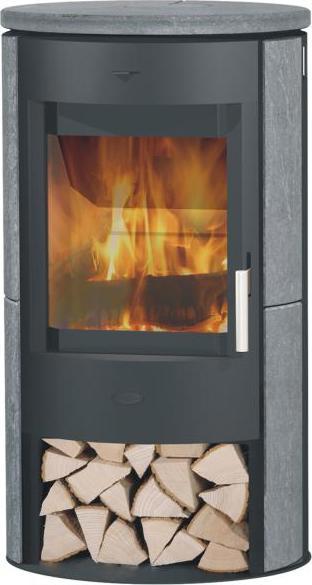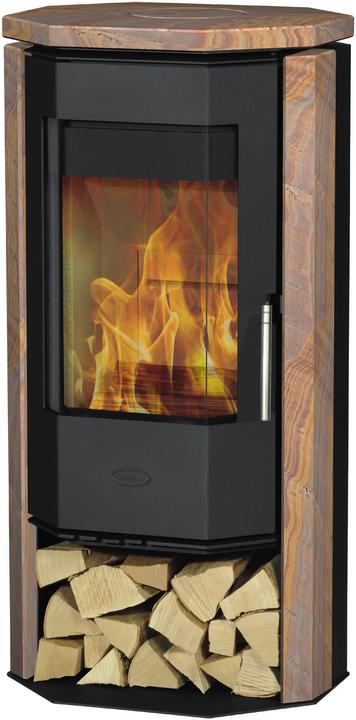
Top-rated products in the Electric fireplaces + bio-ethanol fireplaces category
Here's a ranking of the top rated products in this category. To give you a quick overview, we've also added some key information about the products.
1. Fireplace stove 'Phoenizia 2
Fireplace stoves are suitable for continuous operation around the clock, but the refueling interval is shorter. For a nominal heat output of 4 kW, you can expect to use 1 kg of dry firewood. Using this formula, you can calculate the amount in kg that can be loaded at once for all nominal heat outputs. Refueling is done only after the wood has burned down. This method also makes classic fireplace stoves suitable for continuous operation without cooling down. These stoves are optimized for burning wood but can also be loaded with briquettes to maintain the embers. The fire chamber is insulated against intense heat with vermiculite boards.
An efficiently designed air supply system ensures optimal combustion. Primary and secondary air contribute to a high efficiency, while the additional post-combustion air (tertiary air) ensures low emissions, and the pre-warmed glass cleaning air (secondary air) guarantees a clear viewing window.
The heat output from the fireplace stoves is an optimal combination of radiation and convection. The radiation provides a pleasant warmth for the human body, while convection warms the room air, which distributes evenly throughout the space. The side and rear convection jackets, along with additional steel fins, enable intense heat output and also ensure better structural stability.

2. Fireplace Amaranth stove
The 5 kW Amarant fireplace stove from Fireplace is the highlight of any room with its three-sided glazing. It creates a modern and exclusive atmosphere with its black steel and glass top plate, stylishly heating spaces up to 116 m³. The firebox door features integrated glass cleaning and an automatic door closure.
The long handle on the firebox door adds an interesting accent to the otherwise straight-lined stove, giving it an even more modern appearance. However, the absolute eye-catcher is the three-sided panoramic glazing, which allows you to view the flickering flames from nearly all angles.
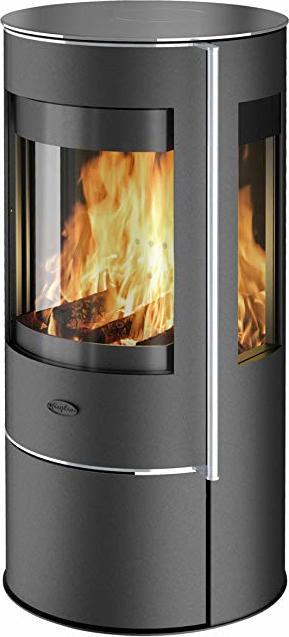
3. Fireplace 'Tuvalu' K5730
Fireplace stoves are suitable for continuous operation around the clock, although the refueling interval is shorter. For a nominal heat output of 4 kW, you can expect to use 1 kg of dry firewood. Using this formula, you can calculate the amount in kg that can be added at once for all nominal heat outputs. Refueling only occurs after the wood has burned down. This method also makes traditional fireplace stoves suitable for continuous operation without cooling down. These stoves are optimized for burning wood but can also be loaded with briquettes to maintain embers. The firebox is thermally insulated against intense heat with vermiculite plates.
An efficiently designed air supply system achieves optimal combustion. Primary and secondary air contribute to a high efficiency, while the additional combustion air (tertiary air) ensures low emissions, and the pre-warmed glass cleaning air (secondary air) guarantees a clear viewing window.
The heat output from the fireplace stoves is an optimal combination of radiation and convection. The radiation provides a pleasant warmth for the human body, while convection warms the room air, which distributes evenly throughout the space. The side and rear convection jackets, along with additional steel fins, enable intense heat output and also ensure better structural stability.
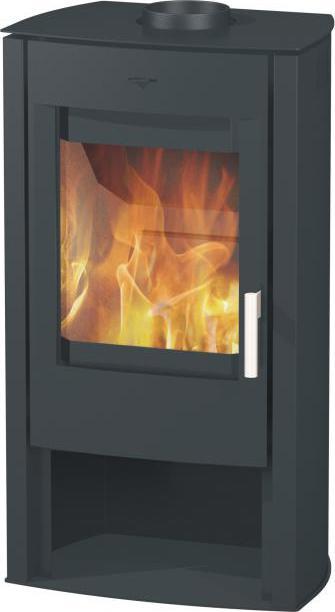
4. Fireplace Stove 'Alicante
Fireplace stoves are suitable for continuous operation around the clock, but the refueling interval is shorter. For a nominal heat output of 4 kW, you can expect to use 1 kg of dry firewood. Using this formula, you can calculate the amount in kg that can be added at once for all nominal heat outputs. Refueling occurs only after the wood has burned down. This method also makes classic fireplace stoves suitable for continuous operation without cooling down. These stoves are optimized for burning wood but can also be loaded with briquettes to maintain embers. The combustion chamber is insulated from intense heat with vermiculite boards.
An efficiently designed air supply system achieves optimal combustion. Primary and secondary air contribute to a high efficiency, while additional combustion air (tertiary air) ensures low emissions, and the pre-warmed glass cleaning air (secondary air) guarantees a clear viewing window.
The heat output from the fireplace stoves is an optimal combination of radiation and convection. The radiation provides a pleasant warmth for the human body, while convection warms the room air, which distributes evenly throughout the space. The side and rear convection jacket, along with additional steel fins, enable intense heat output and also ensure better structural stability.
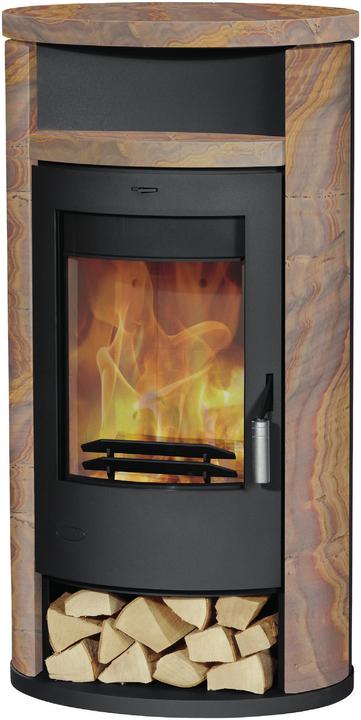
5. Fireplace stove 'Zaria' K5690
Fireplace stoves are suitable for continuous operation around the clock, although the refueling interval is shorter. For a nominal heat output of 4 kW, you can expect to use 1 kg of dry logs. Using this formula, you can calculate the amount in kg that can be added at once for all nominal heat outputs. Only after the wood has burned down should you refuel. This method also makes traditional fireplace stoves suitable for continuous operation without cooling down. These stoves are optimized for burning wood but can also be loaded with briquettes to maintain embers. The fire chamber is insulated against intense heat with vermiculite boards.
A well-designed air supply system achieves optimal combustion. Primary and secondary air ensure high efficiency, while the additional post-combustion air (tertiary air) allows for low-emission operation, and the pre-warmed glass cleaning air (secondary air) ensures a clear viewing window.
The heat output from the fireplace stoves is an optimal combination of radiation and convection. The radiation provides a pleasant warmth for the human body, while convection warms the room air, which distributes evenly throughout the space. The side and rear convection jacket, along with additional steel fins, enable intense heat output and also ensure better structural stability.
